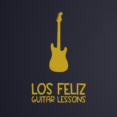How to Play Funk Guitar: A Comprehensive Guide
Funk guitar is a vibrant and dynamic style that has significantly influenced various music genres, from jazz and rock to hip-hop and pop. With its rhythmic intensity and groove-centric approach, funk guitar playing is as much about feel and timing as it is about the notes you play. This guide will walk you through the essential techniques and concepts to get you playing funk guitar like a pro, with a special nod to the funky vibe often found in places like Silver Lake, where creativity and musical innovation thrive.
Understanding the Basics of Funk Guitar
At the heart of funk guitar lies rhythm and groove. Unlike many other styles, funk often prioritizes the rhythm section, with the guitar serving as a percussive, syncopated instrument. Here are the core elements to focus on:
- Rhythmic Precision: Funk guitar relies heavily on tight, precise rhythms. It’s not just about playing the right notes but also about when and how you play them. Practice with a metronome to ensure your timing is impeccable.
- Syncopation: Syncopation is crucial in funk music. It involves placing accents on the off-beats or unexpected places within the measure. This creates a groove that makes funk so infectious and danceable.
- Chords and Voicings: Funk often uses simple chords, but they are played in a specific way. Dominant 7th and 9th chords are staples in funk music. These chords provide a bright, punchy sound that cuts through the mix.
Essential Techniques for Funk Guitar
1. Chord “Chops”
One of the most distinctive features of funk guitar is the use of short, staccato chords known as “chops.” To execute this technique:
- Use your fretting hand to lightly touch the strings, muting them without pressing down fully.
- Strum the muted strings with your picking hand to create a percussive, “choppy” sound.
- Incorporate actual chord tones by pressing down on the strings at the right moment to add melodic content to your rhythm.
2. Right-Hand Muting
Right-hand muting is essential for achieving the characteristic percussive sound in funk guitar:
- Rest the palm of your picking hand lightly on the strings near the bridge.
- Strum the strings while maintaining this light pressure to create a muted, rhythmic effect.
3. Double Stops
Double stops involve playing two notes simultaneously, often on adjacent strings. In funk, these are usually played in quick, rhythmic bursts:
- Focus on intervals like thirds, fifths, and octaves.
- Experiment with sliding into double stops to add a fluid, dynamic feel.
4. Hammer-Ons and Pull-Offs
These techniques add embellishments and fluidity to your playing:
- Hammer-Ons: Pick a note, then quickly press down a higher note on the same string without picking again.
- Pull-Offs: Pick a note, then pull your finger off to let a lower note sound without picking again.
Getting Into the Groove: Practical Tips
- Start with Simple Patterns: Begin with basic rhythm patterns, such as playing on the 1 and the 2-and of each measure. Gradually incorporate more complex rhythms and syncopations.
- Use a Metronome: Practicing with a metronome will help you develop a solid sense of timing, which is crucial in funk guitar.
- Play Along with Funk Tracks: Immersing yourself in funk music by playing along with records will help you internalize the groove. Classic artists like James Brown, Parliament-Funkadelic, and Prince are great starting points.
- Learn from the Masters: Study the playing of renowned funk guitarists such as Nile Rodgers, whose work with Chic epitomizes the clean, rhythmic playing central to funk.
Funk Guitar in Los Angeles
Los Angeles has produced some of the finest funk bands of the last 40 years. Check out The Brothers Johnson, Fishbone, Weapon of Choice and many more. The community’s creative energy makes it an ideal backdrop for aspiring funk guitarists to develop their craft.
Advanced Techniques for Funk Guitar
1. Incorporating Slides
Slides add a smooth, gliding effect to your playing and can enhance your funk rhythms:
- Start by picking a note and then slide your finger up or down the fretboard to another note.
- Incorporate slides into your chord voicings and double stops for added expression.
2. Using Octaves
Playing octaves is a common technique in funk guitar that adds depth and punch to your playing:
- Place your index finger on a note and your ring finger (or pinky) on the same note one octave higher, typically two strings up and two frets apart.
- Strum only the two strings you’re fretting, muting the others with your remaining fingers.
3. Envelope Filters and Wah Pedals
Effects pedals like envelope filters and wah pedals are often used in funk guitar to create dynamic, expressive sounds:
- Envelope Filter: This pedal responds to the intensity of your playing, creating a funky, auto-wah effect.
- Wah Pedal: By rocking the pedal back and forth, you can create a sweeping, vocal-like effect that adds a new dimension to your playing.
Bringing It All Together
To truly master funk guitar, it’s essential to combine these techniques and concepts into a cohesive playing style. Here’s a step-by-step approach:
- Daily Practice: Dedicate time each day to practicing rhythmic patterns, chord chops, and muting techniques.
- Jam Sessions: Participate in jam sessions, whether in-person or online, to develop your improvisational skills and interact with other musicians.
- Live Performances: If possible, perform live. Silver Lake, with its numerous venues and enthusiastic audiences, provides ample opportunities to showcase your funk guitar skills and gain valuable experience.
Conclusion
Playing funk guitar is a fulfilling and exciting endeavor that requires a strong sense of rhythm, precise timing, and a deep groove. By focusing on the essential techniques, practicing regularly, and immersing yourself playing with others, you can develop your funk guitar skills and bring infectious grooves to any musical setting. So, grab your guitar, get up for the down stroke and come work on this stuff at Los Feliz Guitar Lessons!

